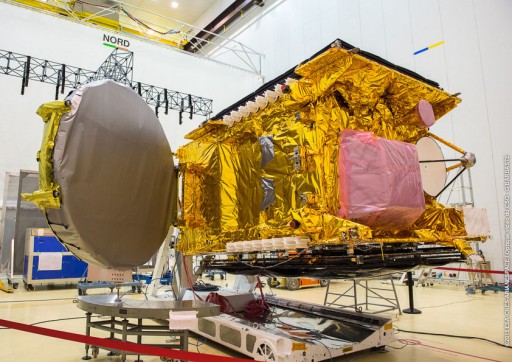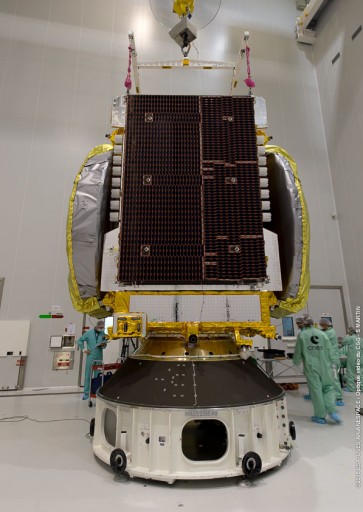GSAT-15 Satellite Overview

GSAT-15 is an Indian Geostationary Communications Satellite part of the GSAT fleet that has been in operation since the early 2000s to deliver a variety of communications services to the civilian and government sectors. The GSAT-15 satellite, like all other satellites in the constellation, was built by the Indian Space Research Organization. The all-Ku satellite will be operated by Insat to replace two old INSAT spacecraft.
The GSAT-15 spacecraft is based on ISRO’s I-3K satellite bus built for Geostationary Spacecraft in the 3,000-Kilogram mass range with a total power capability of 6,500 Watts of which 4,900W are available to the communications payload. The I-3K bus was first flown in 2005 and supports a payload mass of up to 400 Kilograms, consisting of 24 transponders or more.
Overall, GSAT-15 has a launch mass of 3,100 Kilograms and is 3.1 by 1.7 by 2.0 meters in size when in its stowed configuration. The spacecraft has a dry mass of around 1.4 metric tons. In orbit, the satellite has a span of 15.4 meters when both of its solar arrays, each with three 2.8 by 1.9-meter segments, are opened up. The spacecraft features two 2.4-meter deployable antenna reflectors.

GSAT-15 uses the trusted Liquid Apogee Motor for apogee-raising maneuvers while 22-Newton thrusters are used for attitude maneuvers and stationkeeping in Geostationary Orbit. Both engine types use hypergolic propellants, MON-3 oxidizer (Nitrogen Tetroxide with 3% Nitric Oxide) and Unsymmetrical Dimethylhydrazine as fuel.
Tank pressurization is accomplished by using high-pressure Helium. LAM provides 440 Newtons of thrust which equates to 44.87 Kilograms. The engine operates at a mixture ratio (O/F) of 1.65 and has a nozzle ratio of 160 providing a specific impulse of 3,041N*sec/kg. The engine’s injector is a co-axial swirl element made of titanium while the thrust chamber is constructed of Columbium alloy that is radiatively cooled. Electron welding technique is used to mate the injector to the combustion chamber.
LAM is a robust engine that can tolerate injection pressures of 0.9 to 2.0 MPa, propellant temperatures of 0 to 65°C, mixture ratios of 1.2 to 2.0 and bus voltages of 28 to 42 Volts. The engine is certified for long firings of up to 3,000 seconds and a cumulative firing time of >23,542 seconds.
The communications payload of GSAT-15 is comprised of 24 Ku-Band transponders that will serve the Indian territory. GSAT-15 will replace INSAT-3A (launched in 2003) and augment the capabilities of INSAT-4 (in orbit since 2007), supporting Direct-to-Home television services and supplying comm services to very small aperture terminal (VSAT) operators.
GSAT-15 also carries two C x L transponders in support of GPS Aided Geo Augmented Navigation for Safety of Life (SOL) operations benefiting the civil aviation services. The GAGAN payload, operating at the L1 and L5 frequencies, serves the entire hemisphere of Earth that is visible to the satellite. In addition, the satellite hosts two Ku-Band beacons.
The GSAT-15 satellite will be stationed at 93.5°E for an expected operational life of 12 years.
